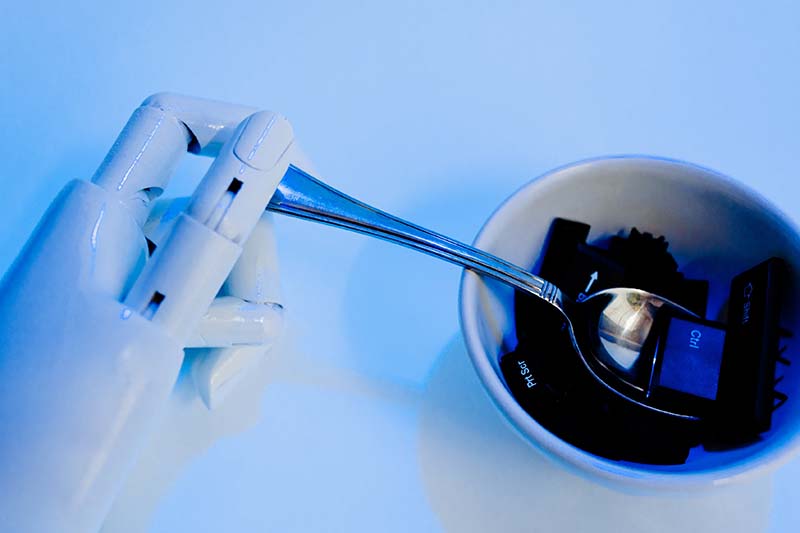
Various technologies are developed every day – there are constant reports and news about the use of artificial intelligence (AI) by different companies across the globe. Digital tools, programs for automation, and AI-powered solutions came into our life almost imperceptibly, but in the short term, they managed to completely change it.
Such technologies found their way into the field of translation, enhancing our present experience with machine translation and possibly even attempting to drive specialists from the market. Today we will discuss the input of AI solutions on digital translators and the long-term possibilities AI-powers technologies bring to the table.
Automating and Accelerating Translation Process
When we talk about AI-powered tools, we imagine a “smart machine” that independently adapts huge amounts of text from one language into another swiftly and without any mistakes. Our forefathers that started implementing AI technologies into digital translators believed that thanks to a computer program, they would be able to turn translation into a fast, perfectly structured process. After all, it is human nature to make mistakes, but machines are free from such weakness.
However, modern developers are working not on a machine that can completely replace a person, but on one that can help people by facilitating certain processes. Following this idea, the first automation programs appeared – Computer-Assisted Translation (CAT) tools.
Such tools were meant to automate translations. They are often based on a technology of saving and reusing previously performed translations – Translation Memory (TM). TM also uses digital analogs of the standard resources such as dictionaries or glossaries. Efficient use of TM as well as automated tools increases the speed of work and reduces costs.
Meural Machine Translation – a New Technological Leap
Another step in integrating AI into translation was the creation of NMT, which is done by using neural networks. Recently, many IT companies are using neural networks: for example, Google, as well as Facebook, are already using them in various services. When processing data, a neural network does not just follow a certain algorithm but looks for ways in which they can solve a problem, learning how they may solve it independently. The more tasks such solution performs, the better it copes with them. It is for this similarity to the principle of the human brain that neural networks are called artificial intelligence.

Machine VS Human?
While modern ways of adapting the text to foreign languages are constantly improving, there is no need to pit machine translation against human translation. AI translators can be used to effectively translate technological, non-fixation texts, which can greatly help reduce costs of producing certain articles or books, excluding translators, editors, and proofreaders from that process. However, AI-powered solutions cannot presently create a ready-to-use text – the product of artificial intelligence still must be edited by people.
Research shows that professionals are not worried that they will be replaced by AI-powered tools. That said, considering the speed at which technologies get refined nowadays, a perfect AI translator is quite possibly within our reach.

Information provided by Raconteur
How Will AI Translators Make Our Lives Better?
AI technologies can potentially improve and streamline this process and influence human lives in many ways:
- Companies will no longer need to spend money on creating multilingual versions of websites, landing pages, and marketing materials. However, official documents, medical or legal texts still must be handled by human experts, such as ones at TranslationReport.
- Software developers will have a positive effect in terms of localization.
- The possibilities of accessible text and video translation will make it possible to democratize universities’ learning process and make online education more affordable and of higher quality. Many universities open their courses to people online, and, having access to lectures in their own language, it will be possible to receive a diversified education from anywhere in the world. Universities will be able to earn money on their programs, while students will receive a quality education.

- As soon as high-quality simultaneous interpretation appears (that is, real-time translation using AI and taking into account intonation and tone of voice), we will see a new round of development of social relations in the world. In particular, there will be able to form better connections between people of completely different groups. As a result, migration, as well as tourist flows, will increase.
- AI can possibly go as far as creating brain implants for synchronous communication in several languages.
- Integrating AI has the potential to lead to a truly global market.
- More accessible knowledge and faster communication will lead to more effective cooperation between talents from different parts of the world, working together to solve global problems.
- AI technologies will make high-quality translations more affordable and available to the general public. Various smart technologies assisting translators can help people get better, cheaper, more qualitative results.
Conclusion
Of course, modern IT solutions for translation are still far from perfect. However, machine learning and AI technologies are progressing very quickly. Full access of neural networks to all texts created by humanity will accelerate the development of AI, boost its further implementation in all fields of human activity, including translations, and will lead us into a more convenient and advanced future.

Michael is a passionate writer who has expertise in a variety of fields – from relationships and motivation theories to technology and education. He cares about what he writes and has a great eye for details. His hobbies include programming and reading.


















